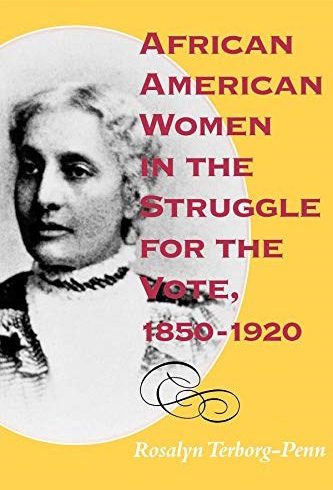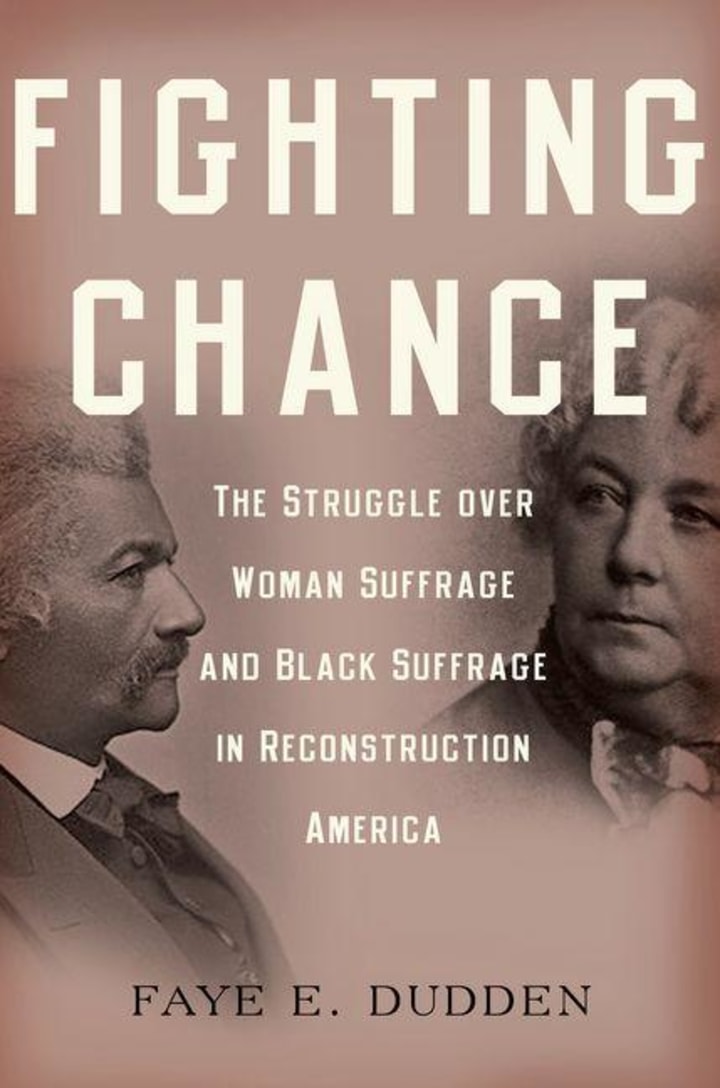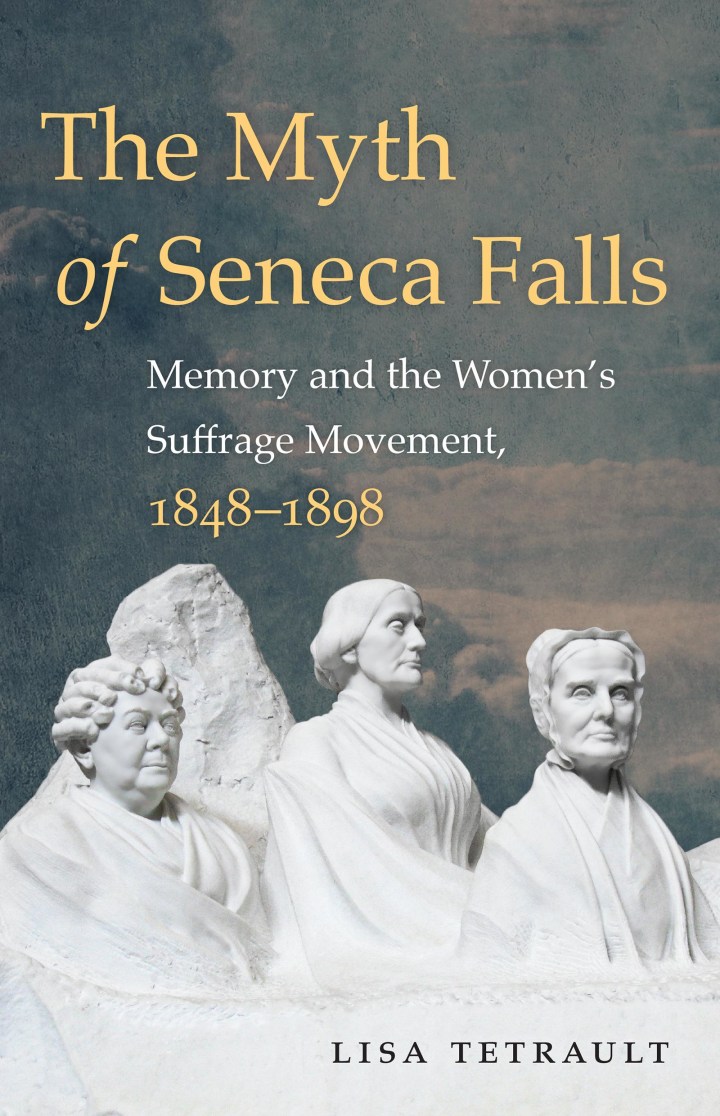Some women were voting decades before 1920 — if they were white
While the 19th amendment nationalized suffrage of women, allowing most American women to vote, Tetrault explains, “all across the West, women were voting by the millions before 1920.” What was then known as the Wyoming Territory granted women the right to vote in its 1869 constitution, for example, and other Western states followed suit:
- Utah in 1870
- Nevada in 1871
- Colorado in 1893
But right from the start, those rights were provisional, Tetrault noted: Laws included barriers keeping non-white and Native American women from voting, for example. “If you were a woman of color, you would find that states still had some prohibitions in terms of literacy tests and poll taxes — which were disproportionately applied to women of color,” said Tetrault. “So if you were a Latinx woman living in New Mexico, you might find yourself subject to a literacy test.”
Racism ‘part of the policy’ in suffrage movement
Suffragist women leaders relied on racist rhetoric themselves in order to further their cause, explains Sally Roesch Wagner, a women’s rights historian and author. “As the movement became more conservative, racism became part of the policy,” she noted.
Renowned suffragists Elizabeth Cady Stanton and Susan B. Anthony, for example, considered the 15th Amendment — which sought to prohibit discrimination based on race, color or previous servitude — an affront since white women were still barred from voting. They also “used racism to appeal to white Southern legislators toward the end of the suffrage battle,” said Wagner, calling a major part of their strategy. “They argued that racism was a way to maintain white, native-born supremacy since white women outnumbered African Americans and immigrants.”
But even as women of color were denied the democratic process, African American, Native American and Latino activists were organized their communities to fight for the right to vote. In the “The Women’s Suffrage Movement” anthology, which she edited, Wagner aimed to create a history of suffrage “that doesn’t start with white women and one that really deals with the racism of the movement,” she said. “I also wanted to see something that doesn’t just deal with the vote but all of the other issues that they were dealing with, from equal pay to reproductive justice.”
The Morning Rundown
Get a head start on the morning’s top stories.
Ideological battles within the women’s suffrage movement
Equal pay and reproductive rights were deeply entrenched in the women’s suffrage movement. The discussion about women’s equal pay, for example, goes back to at least 1850. “Equal pay for equal work was a phrase they used,” Wagner explained. “Women then were making about a third of what men were making.”
- Today, women make 80 cents for every dollar a man makes — if they’re white
- Black women earn 63 cents on the dollar
- Native American women earn 58 cents
- And Hispanic women earn 54 cents
Native American culture’s influence on women suffragists
Matilda Joslyn Gage — having co-authored three volumes of ‘A History of Woman Suffrage’ with Stanton and Anthony, among other things — was considered one of the most radical American suffragists of her era, enmeshed in the movement during the 1850s and 60s, explained Wagner, who’s written extensively about Gage.
“Gage — who really got written out of history because she was far too progressive — saw a vision of a transformed world not just for equality but a world in balance and harmony,” Wagner said. Gage’s personal views included a strong belief in women’s rights over their bodies, the need for a strict separation between church and state, and the assertion that the Christian church was a patriarchal force. “She dropped out [of the suffrage movement] as the movement became more conservative.”
Through her research on Gage’s life and subsequent book, “Sisters in Spirit,” Wagner found that she and other prominent American suffragists, like Lucretia Mott, were deeply influenced by the Haudenosaunee (also known as the Iroquois) people who populated what is now upstate New York and Canada, where Gage spent years meeting with and writing about the power and influence Haudenosaunee women had in their communities.
African American rights and ‘the beginning’ of the suffrage movement
Meanwhile, African American suffragists like Frances Ellen Watkins Harper and Mary Ann Shadd Cary were drawing attention to their own communities after the Civil War and during the Reconstruction era.
Harper was “an incredible civil rights and gender activist. She says we are all bound up together in our struggles,” said Tetrault, adding Harper particularly focused on the racism she experienced as a black woman living in the North during the 1850s and 60s. In Tetrault’s view, it is more accurate to view the ratification of the 19th amendment as the beginning of the suffrage movement rather than the end.
“The movement continued after 1920 for all of the women who didn’t get the right to vote then — the movement is alive and well in some ways,” she said. While many black women in the North were voting after the 19th Amendment was ratified, it would be decades until most black American women in the South obtained the right to vote.
adding it would be decades until most Black American women in the South obtained the right to vote. “It is really the Voting Rights Act of 1965 that finally eliminated lots of those obstacles for women of color.”
Similarly, historian Tammy L. Brown says 1960s civil rights activists like Fannie Lou Hamer — who worked to get African Americans the right to vote in her home state of Mississippi throughout the 1960s — are suffragists in their own right.
The best books to read about the misunderstood history of the women’s suffrage movement
If you want to learn more about the women’s suffrage movement during this Women’s History Month or branch out into the specific topics we surfaced above, here are some recommendations from the historians we spoke to and some of the key topics each one covers.
1. “African American Women in the Struggle for the Vote, 1850-1920” by Rosalyn Terborg-Penn
The activism of Harper, Cary and others are detailed in the late historian Rosalyn Terborg-Penn’s book, which she wrote and researched as a response to Anthony and Stanton’s “History of Women’s Suffrage.” Tetrault calls it “an incredibly important book. She is trying to reassert [black suffragists] into the standard narrative” about the movement.”
2. “Mary Ann Shadd Cary: The Black Press and Protest in the Nineteenth Century” by Jane Rhodes
Mary Ann Shadd Cary was born into a free black family that fled to Canada in the 1850s after the passage of the Fugitive Slave Act. She would go on to launch a newspaper and advocate for women’s and black rights, later returning to the U.S., where she “continues to be a newspaper publisher working for the freedom of her people,” said Tetrault, adding several good biographies of Cary and Harper have been released in recent years and recommending any of them. “She will also become a voting rights activist in Washington, D.C., and organize with women of color to get the right to vote in the 1870s.”
3. “Fighting Chance: The Struggle over Woman Suffrage and Black Suffrage in Reconstruction America” by Faye E. Dudden
But while those multifaceted conversations about women’s rights were going on, Anthony and Stanton feared those issues detracted from the push for a constitutional amendment. “Anthony really wanted the vote,” Wagner explained. “She saw that as the most important thing: We get the vote and everything else will get taken care of.”
4. “Vanguard: How Black Women Broke Barriers, Won the Vote, and Insisted on Equality For All” by Martha S. Jones (pre-order, publishes Sept. 8, 2020)
Because Anthony viewed courting Southern support as critical — and often expressed her own racist views in — she also actively downplayed voices and efforts of African American activists, especially those working on non-voting issues, as detailed in the upcoming “Vanguard.” “Black delegates to the National American Woman Suffrage Association conventions were sometimes turned away,” explained Wagner. “When they asked for assistance with civil rights issues, they were told by the various Presidents (including Susan B. Anthony) that the organization only worked for the vote.”
5. “The Myth of Seneca Falls: Memory and the Women’s Suffrage Movement” by Lisa Tetrault
Stanton and Anthony’s singular focus on voting rights influences the way Americans view women’s suffrage today, largely as a result of the mythology they created around the suffrage movement. As an example, Tetrault highlights the popular narrative surrounding the Seneca Falls convention of 1848, in which Stanton, Anthony and Mott said that they launched and led. Researching her 2015 book “The Myth of Seneca Falls,” she experienced “a gradual dawning” about what actually took place.
While the Seneca Falls convention was important, labeling it birth of the suffrage movement allowed them to anoint themselves its leaders. “People don’t tell the story of Seneca Falls until 25 to 40 years later,” said Tetrault. “It was created by Stanton and Anthony as a political tool in a post Civil War world that was very challenging.”
6. “African American Women and the Vote” by Bettye Collier-Thomas
“We must also acknowledge African-American women civil rights activists” that organized for voting rights throughout the 50s and 60s, alongside earlier African American suffragists like Sojourner Truth, Mary Church Terrell, Nannie Helen Burroughs and Ida B. Wells, argued Tammy Brown.
7. “For Freedom’s Sake: The Life of Fannie Lou Hamer” by Chana Kai Lee
“Hamer boldly fought for the enfranchisement of Black Mississippians,” says Brown. “Hamer spoke at Black churches and met with people in their homes — encouraging them to register to vote, even in the face of state-sanctioned racial violence and intimidation.”
8. “Sojourner Truth: A Life, A Symbol” by Nell Painter
“These women — they ended up in jail, they ended up force-fed, they ended up taking real risks to get the right to vote,” notes Wagner. “They gave us this gift, but the gift is just potential.” The fight for voting rights in the United States continues. After the Supreme Court changed the Voting Rights Act in 2013, voter suppression swept across the country.
As the United States celebrates the centennial of the 19th Amendment while also getting ready to vote in the 2020 presidential election, the historians we talked to said now is the perfect time to reflect on the current state of voting rights in the country — and the sacrifices women of all backgrounds have made through the centuries to get the vote.



















